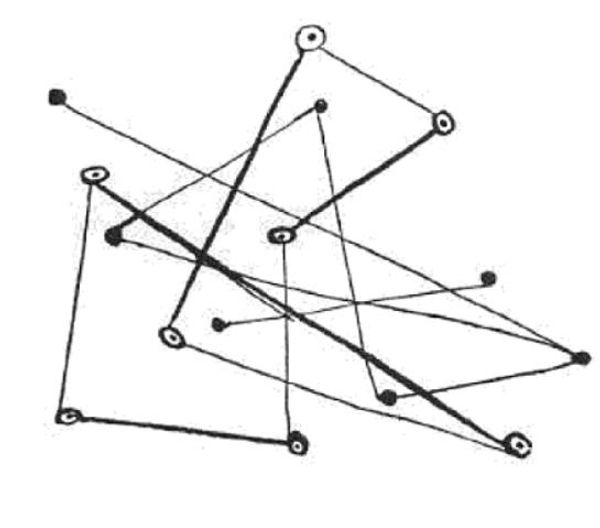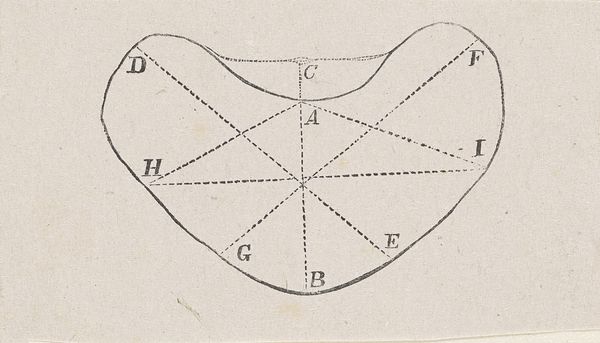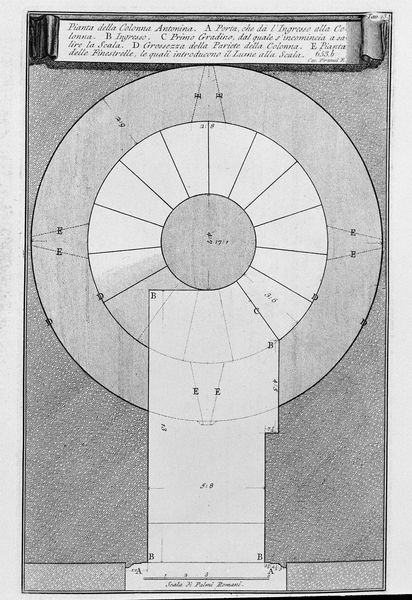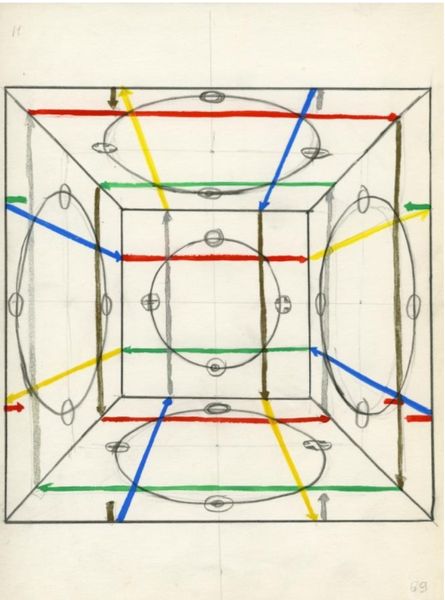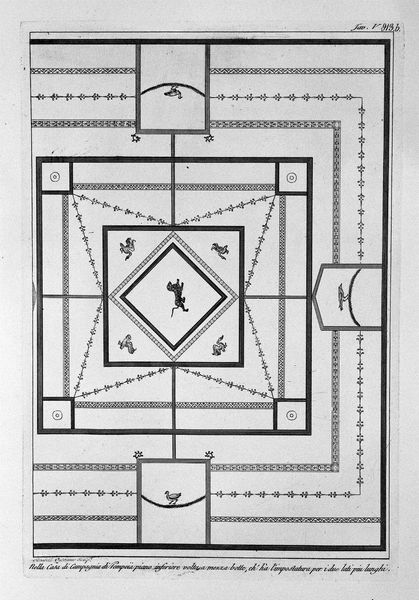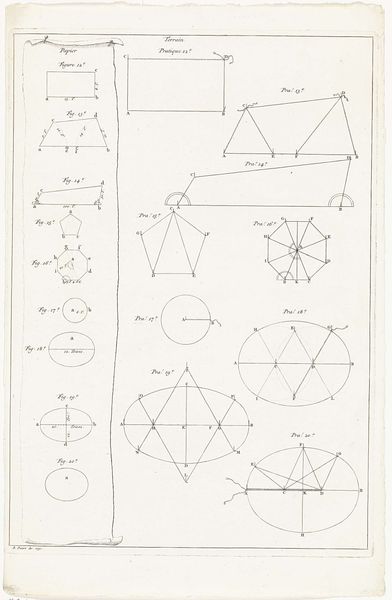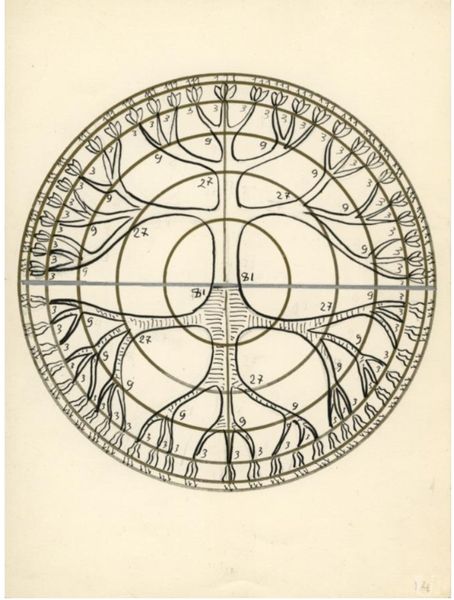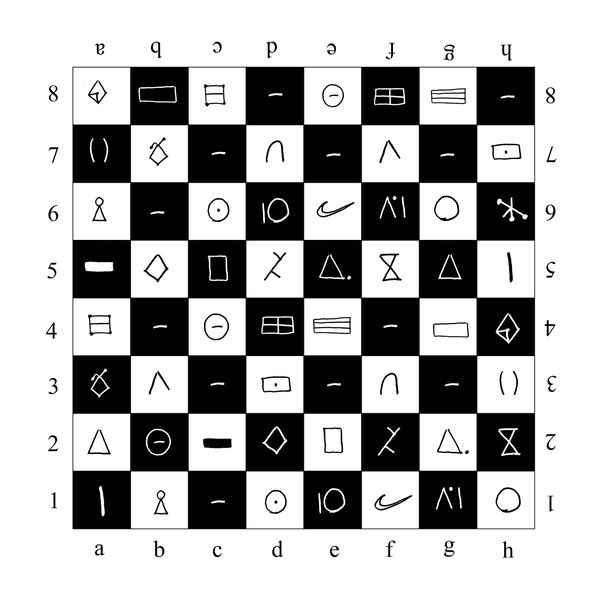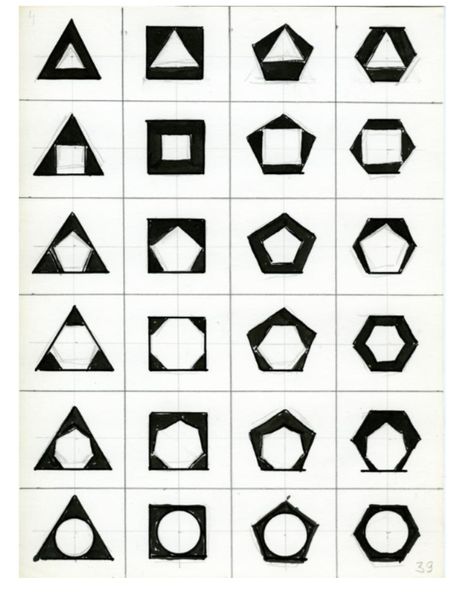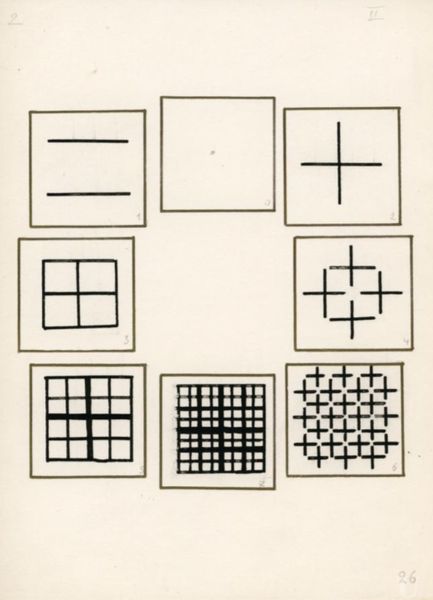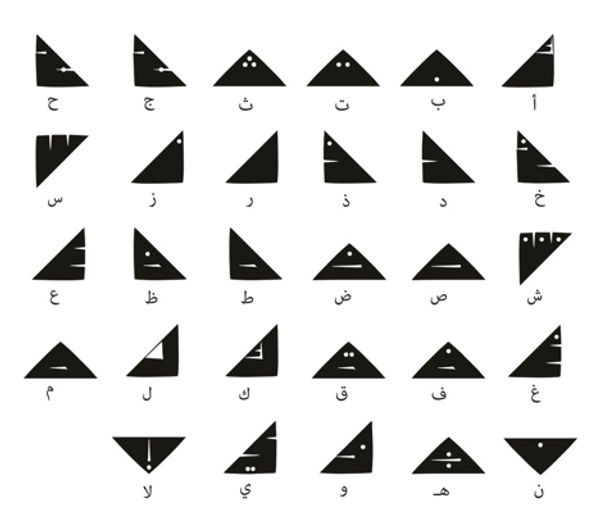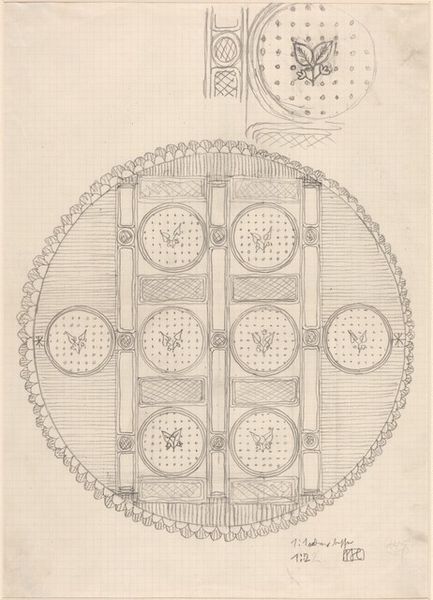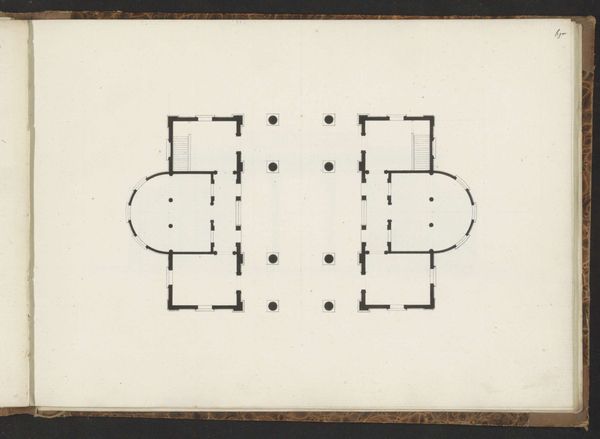
drawing, print
#
drawing
#
architectural modelling rendering
# print
#
architectural diagram
#
architectural plan
#
architectural form
#
text
#
geometric
#
architect
#
architecture model
#
architectural section drawing
#
abstraction
#
architectural drawing
#
line
#
architecture drawing
#
architectural proposal
#
modernism
Copyright: M.C. Escher,Fair Use
Curator: This intriguing print, titled "Scheme", is by M.C. Escher. Immediately, I see a sort of architectural blueprint gone…awry. Editor: Exactly. At first glance, its relentless geometry feels both meticulous and unsettling. It’s monochromatic and seems almost like an exercise in perspective, with patterns diminishing towards the bottom of the structure, like looking into infinity. Curator: It really exemplifies Escher's interest in mathematical principles—fractals, specifically— within the realm of visual art. One can see Escher was always investigating ideas about perception, representation, and, perhaps, a critique of modern architecture itself. He challenges what it means to depict something, testing the boundaries between art and mathematics. Editor: Precisely. Notice the repeated triangles. And each time they recur they grow smaller. There's an undeniable focus on the receding forms, the negative space. How the black lines delineate and construct meaning. I see him using these structural components to suggest a larger space while paradoxically flattening it. Curator: But why this diagrammatic aesthetic? Escher positions art making as a kind of planning or mapping. He draws from modernism’s emphasis on logic, clarity and rationality only to destabilize that by creating paradoxical, infinite recession in space. We are in the period of increasing technological developments that deeply informed art, for instance. How might these trends shape people’s mind? Editor: It’s not merely about mathematical trickery, though. It’s more emotional than that. Those diminishing shapes also generate this sense of something running away from you, constantly slipping out of reach and expanding ad infinitum, it is overwhelming but it creates certain form of excitement. It brings the artwork to life. Curator: True, the artwork does ask how modern society affects the individual, dwarfed and insignificant amidst ever-expanding systems and technologies. In fact, his images are so culturally resonant in society and science, and mathematics—to prompt larger discussion around social order, right? Editor: In the end, "Scheme" leaves me wondering about the true nature of order itself. Whether we are seeing the promise of modernism or the beginning of its decline? It will be constantly intriguing in our world today. Curator: Absolutely, it presents us a compelling paradox—of our impulse to build, create order and rational structures, while it remains chaotic or ambiguous.
Comments
No comments
Be the first to comment and join the conversation on the ultimate creative platform.
